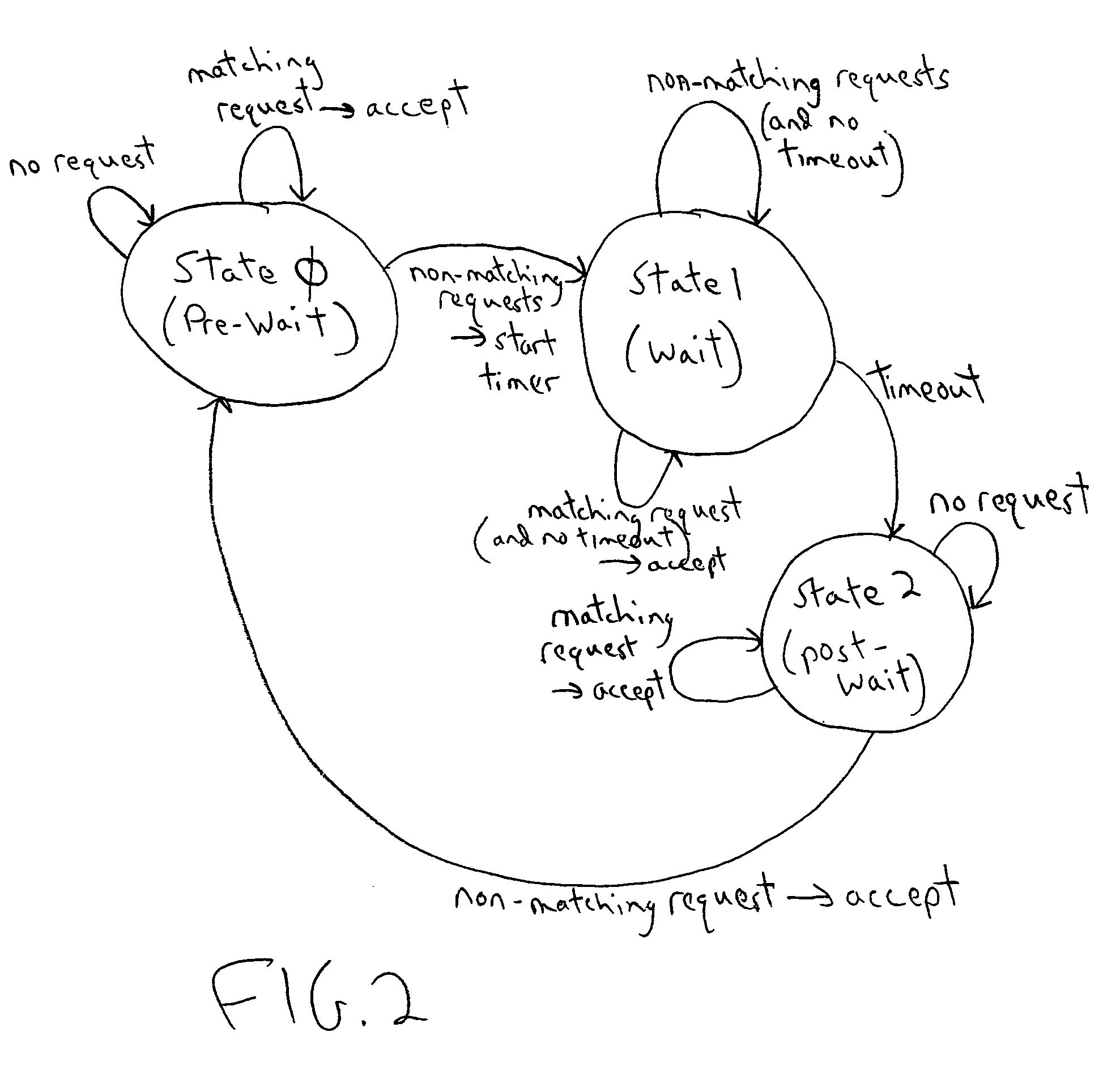Method and system for memory access arbitration for minimizing read/write turnaround penalties
- Summary
- Abstract
- Description
- Claims
- Application Information
AI Technical Summary
Benefits of technology
Problems solved by technology
Method used
Image
Examples
Embodiment Construction
[0019]A system that embodies the invention will be described with reference to FIG. 1. Integrated circuit 1 of FIG. 1 is a graphics processing chip which, in typical implementations, includes numerous components (not shown) in addition to those shown. The components of chip 1 that are shown in FIG. 1, and DRAM 16, comprise the inventive system. Chip 1 includes client devices (“clients”) 2, 4, 6, and 8, and arbiter 3 (comprising elements 10, 11, 12, 13, 14, and 15) coupled between DRAM 16 and clients 2, 4, 6, and 8. Arbiter 3 comprises decision unit 12, multiplexer 14 (coupled to receive a control signal from unit 12), comparison logic 10, match determination logic 11, counter 13, and register 15. At any instant, each of clients 2, 4, 6, and 8 can assert a read or write command (for DRAM 16) to multiplexer 14, and a corresponding memory access request to decision unit 12 and comparison logic 10. Each memory access request includes a data structure (e.g., a bit) that identifies the re...
PUM
 Login to View More
Login to View More Abstract
Description
Claims
Application Information
 Login to View More
Login to View More - R&D
- Intellectual Property
- Life Sciences
- Materials
- Tech Scout
- Unparalleled Data Quality
- Higher Quality Content
- 60% Fewer Hallucinations
Browse by: Latest US Patents, China's latest patents, Technical Efficacy Thesaurus, Application Domain, Technology Topic, Popular Technical Reports.
© 2025 PatSnap. All rights reserved.Legal|Privacy policy|Modern Slavery Act Transparency Statement|Sitemap|About US| Contact US: help@patsnap.com



